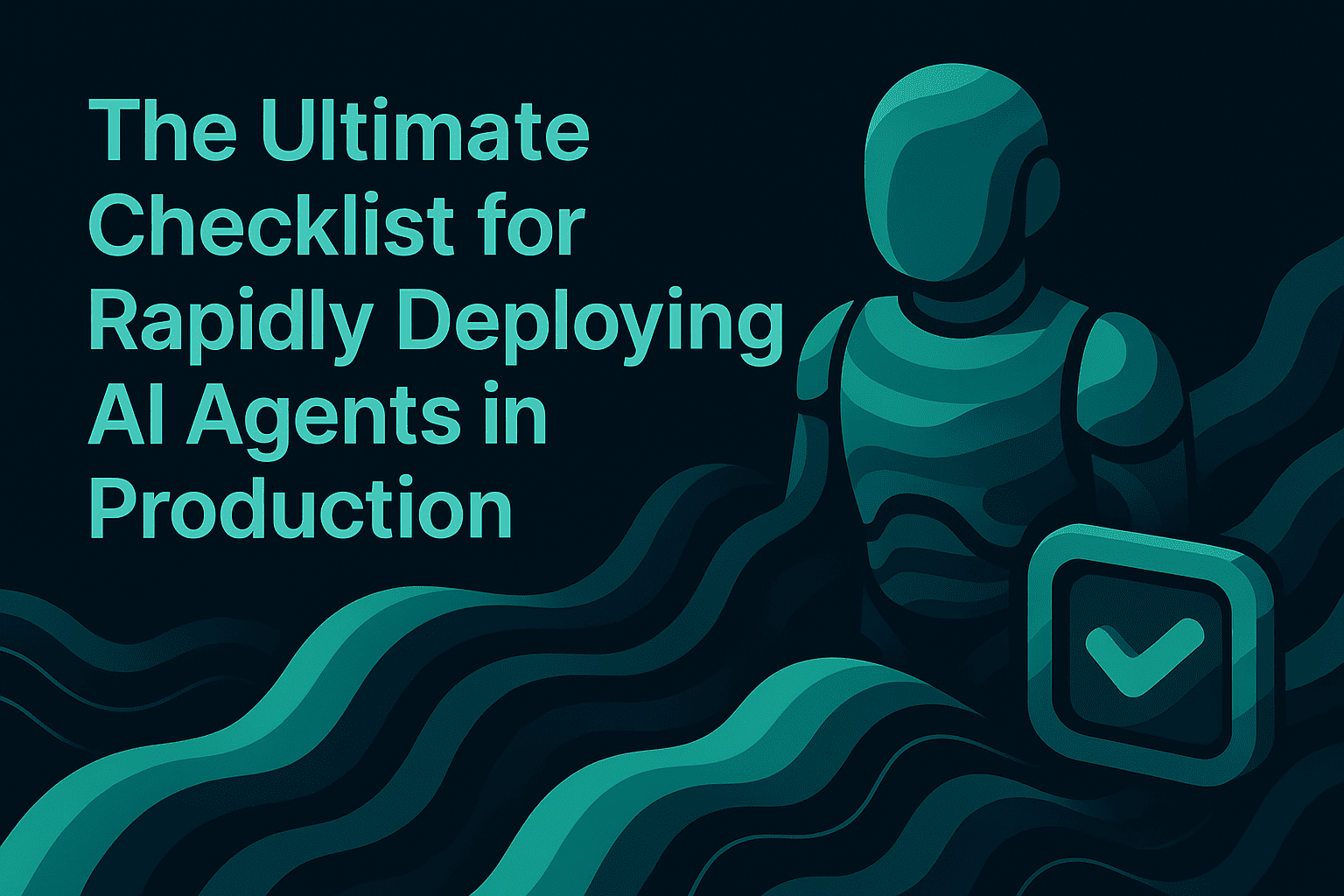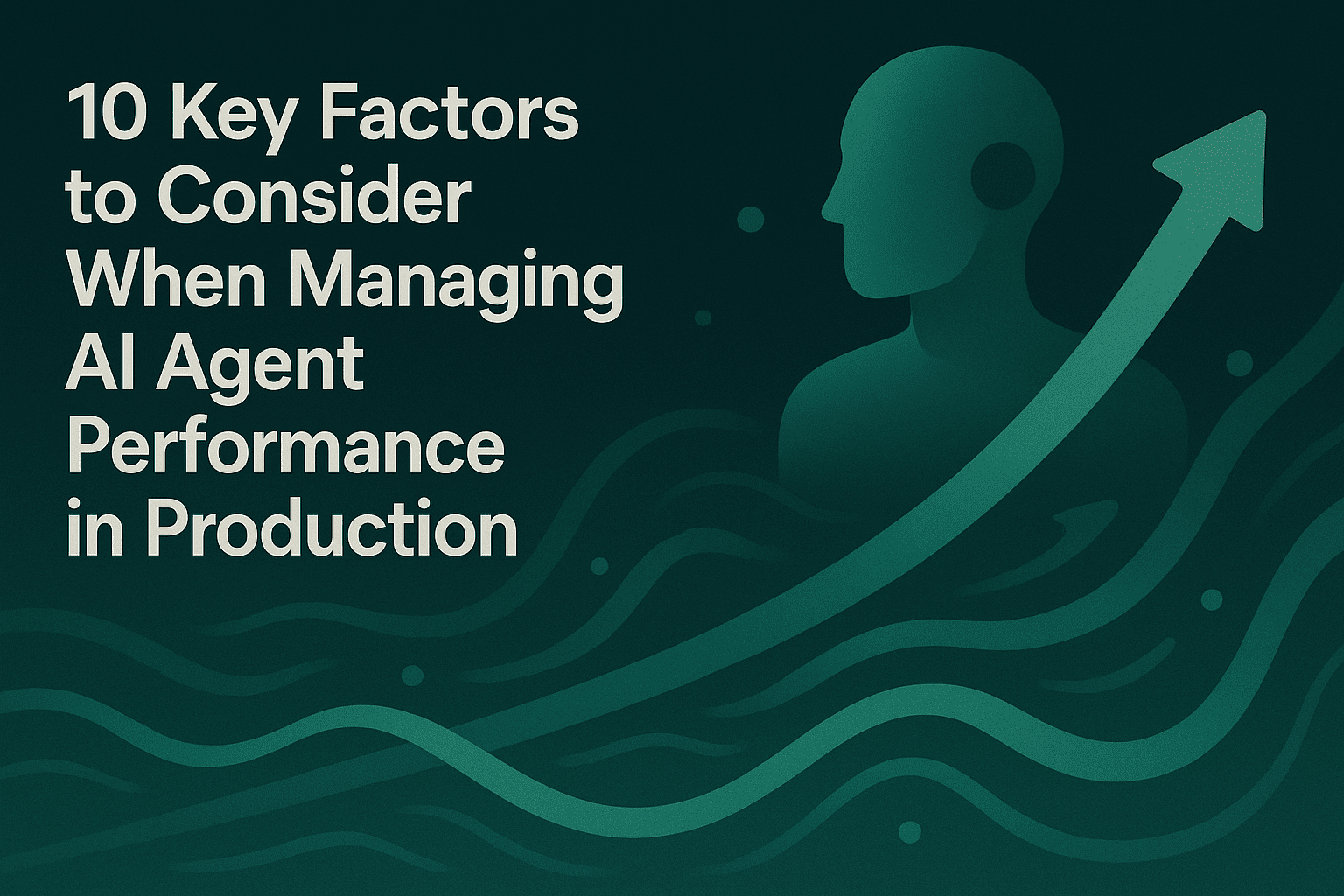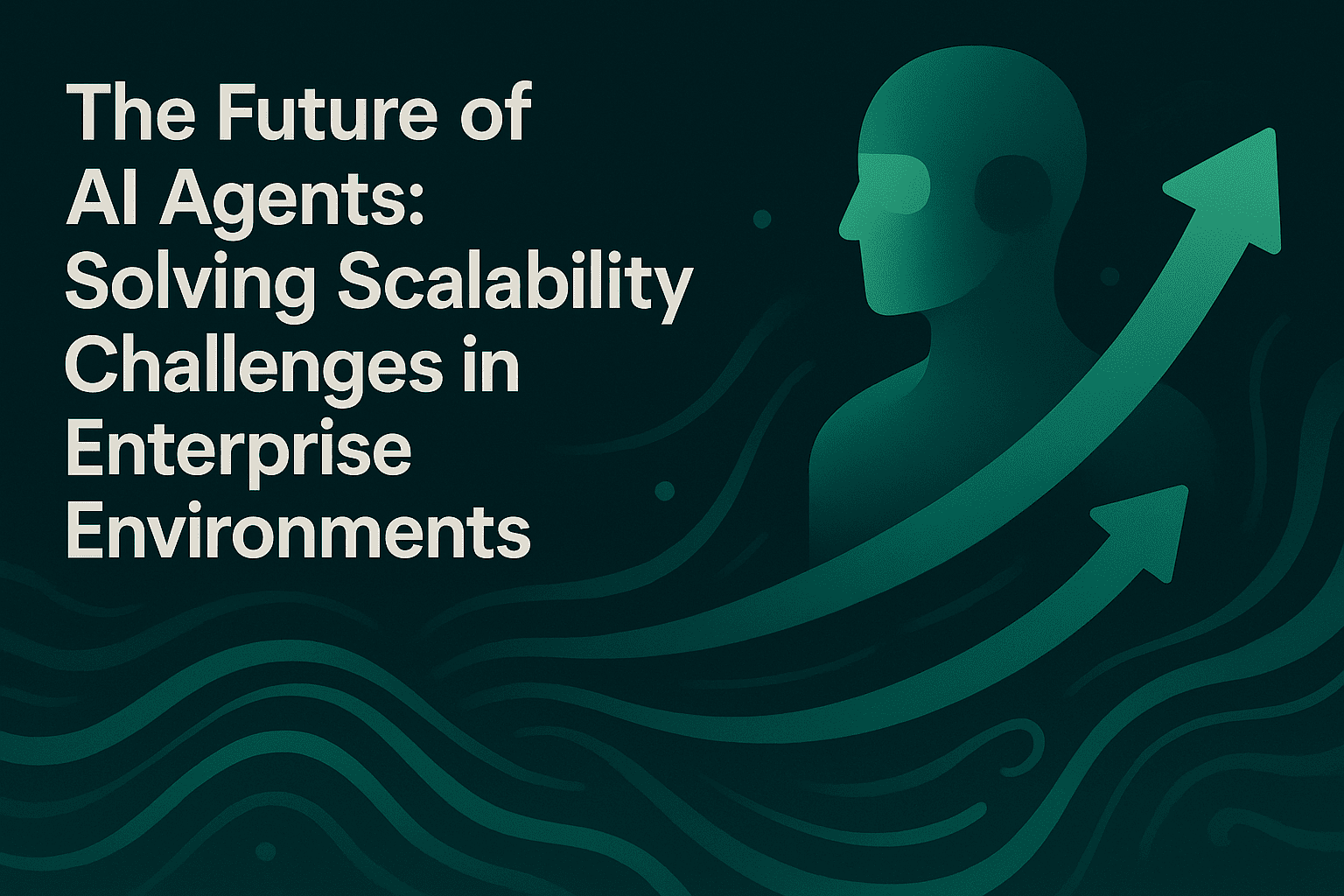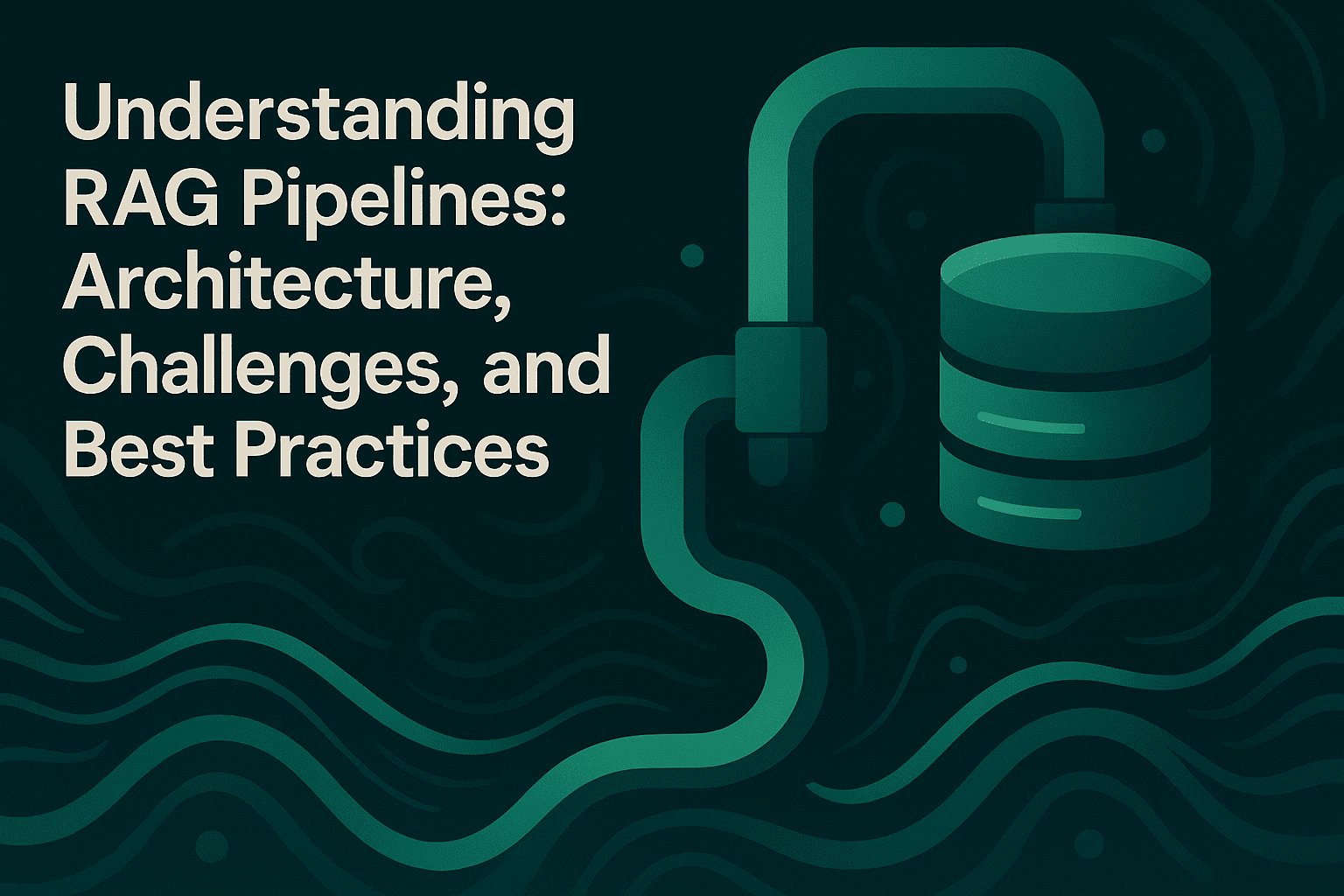The Ultimate Checklist for Rapidly Deploying AI Agents in Production

TL;DR
Deploying AI agents in production requires more than technical implementation. Organizations face a 39% failure rate in AI projects primarily due to inadequate evaluation, monitoring, and governance frameworks. This checklist covers essential steps spanning pre-deployment testing, production readiness, and continuous optimization. Key focus areas include establishing robust evaluation frameworks, implementing distributed tracing for agent observability, setting up automated quality checks, ensuring security and compliance, and building continuous improvement cycles. Teams using comprehensive evaluation and observability platforms can ship AI agents 5x faster while maintaining reliability and trust.
Understanding Production-Ready AI Agents
AI agents represent a fundamental shift from traditional software systems. Unlike conventional applications that follow predetermined paths, AI agents make autonomous decisions, interact with external tools, and adapt their behavior based on context. Production deployment of these systems demands specialized approaches to quality assurance, monitoring, and governance.
Research indicates that 60% of organizations now deploy agents in production environments, with mid-sized companies showing the highest adoption rate at 63%. However, the path from pilot to production remains challenging. Less than 20% of AI pilots successfully scale to full production deployment, primarily because organizations struggle to demonstrate measurable ROI and maintain consistent quality at scale.
The core challenge lies in the non-deterministic nature of AI agents. The same input can generate different outputs across runs, agents operate across multi-step workflows spanning multiple sessions, and they accumulate context that influences future decisions. Traditional software testing methodologies that expect identical outputs for identical inputs fundamentally break down when applied to agent systems.
Pre-Deployment: Establishing Robust Evaluation Frameworks
Comprehensive evaluation forms the foundation for successful agent deployment. Organizations cannot responsibly deploy AI agents without systematic methods to measure quality, reliability, and safety at scale.
Building Your Evaluation Strategy
Production-ready evaluation requires moving beyond informal assessments to structured frameworks that measure multiple dimensions of agent performance. Task success rate measures how reliably agents complete assigned objectives, while correctness and relevance assess whether responses provide factually accurate and useful information. Efficiency metrics capture how agents achieve goals while minimizing unnecessary steps and avoiding repeated loops.
Evaluation must occur at multiple levels. Session-level evaluation assesses whether entire interactions achieve user intent, trace-level evaluation examines the quality of individual reasoning chains, and span-level evaluation validates specific tool calls or LLM responses within larger workflows.
Implementing Automated and Human Evaluation
Successful evaluation combines automated scoring with human judgment. Automated evaluators provide scalability through programmatic checks, statistical analysis, and LLM-as-a-judge approaches. For critical applications, human evaluators offer nuanced assessment of tone, appropriateness, and subjective quality dimensions that automated systems struggle to capture accurately.
Organizations should establish evaluation datasets that cover typical requests, edge cases, and outlier scenarios. Production logs provide the most valuable input as they reveal actual user behavior patterns. All datasets must be consistently labeled and properly anonymized to comply with data protection regulations including GDPR and HIPAA requirements.
Maxim's evaluation framework enables teams to configure evaluations with fine-grained flexibility, running assessments at any level of granularity for multi-agent systems. Teams can leverage off-the-shelf evaluators from the evaluator store or create custom evaluators suited to specific application needs, measuring quality quantitatively using AI, programmatic, or statistical approaches.
Simulation Testing at Scale
Simulation enables testing across hundreds of scenarios before production exposure. Teams should use AI-powered simulations to test agents across diverse user personas and interaction patterns, monitoring how agents respond at every step of complex workflows.
Conversation-level analysis becomes critical for agent systems. Teams must assess whether agents choose appropriate trajectories, complete tasks successfully, and identify points of failure within multi-turn interactions. The ability to re-run simulations from any step helps reproduce issues, identify root causes, and apply learnings to improve performance.
Production Readiness: Building Observability and Monitoring Infrastructure
Observability distinguishes successful deployments from failed experiments. AI agent observability provides deep, actionable visibility into internal workings, decisions, and outcomes throughout the agent lifecycle.
Implementing Distributed Tracing
Distributed tracing captures complete execution paths across agent workflows, providing visibility into every LLM call, tool invocation, and data access. A single user request might trigger 15 or more LLM calls across multiple chains, models, and tools, creating complex execution paths that span embedding generation, vector retrieval, context assembly, reasoning steps, and final response generation.
Production observability must track AI-specific metrics beyond traditional infrastructure monitoring. Token consumption directly impacts costs and requires careful tracking. Organizations optimize spending by monitoring token usage patterns and identifying requests that consume disproportionate resources. Model drift detection catches performance degradation as real-world data evolves, ensuring agents maintain accuracy over time.
Maxim's Agent Observability suite provides distributed tracing that tracks every step from user input through tool invocation to final response. Real-time dashboards enable tracking of latency, cost, token usage, and error rates at granular levels spanning sessions, nodes, and spans. Custom dashboards give teams control to create insights across custom dimensions without code, optimizing agentic systems based on patterns that cut across agent behavior.
Establishing Real-Time Monitoring and Alerting
Continuous monitoring after deployment catches issues, performance drift, and regressions before they impact users at scale. Organizations should track key operational metrics in real time, including response latency, error rates, and throughput. Cost visibility must attribute expenses accurately across users, features, and workflows, reflecting the unique cost drivers of AI systems such as token usage, model selection, and inference frequency.
Alert systems should trigger on anomalies with configurable thresholds, integrating with communication platforms like Slack and incident management tools like PagerDuty. Teams need the ability to quickly surface failure modes through heatmaps, identify underperforming segments, and understand why agents make specific decisions to optimize performance and reduce bias.
Security and Compliance Considerations
Production AI agents face exposure to security risks including prompt injection, data leakage, and unauthorized access to sensitive systems. Security evaluation must surface vulnerabilities before production deployment, particularly when agents access private data or integrate with business-critical systems.
Organizations must implement rollback procedures for every state-modifying operation. Each action that changes system state requires a corresponding compensating transaction that executes automatically on downstream failures. Governance frameworks ensure agents operate within defined boundaries, requiring human approval for high-risk operations and maintaining comprehensive audit logs.
Compliance requirements including GDPR, and industry-specific regulations demand evidence-based assessment of agent behavior. Detailed logging and reporting capabilities support e-discovery requirements and enable detection of unethical interactions, helping organizations maintain audit readiness.
Deployment: Safe Rollout Strategies
Controlled deployment minimizes risk while enabling rapid iteration. Organizations should implement phased rollout strategies that progressively expose agents to production traffic.
Starting with Controlled Pilots
Initial deployment should target limited user populations, typically 5% of total traffic. This pilot phase enables collection of real-world performance data while limiting potential negative impact. Teams track satisfaction scores, resolution rates, and task completion success to validate agent performance before broader rollout.
A/B testing exposes comparable traffic to baseline and updated agent versions, enabling teams to analyze differences in completion rate, latency, and user satisfaction. Short testing windows of one to two weeks typically provide sufficient data to identify statistically meaningful trends before full rollout.
Implementing Gradual Rollout
Progressive deployment strategies incrementally increase traffic to new agent versions based on performance thresholds. Organizations establish success criteria that must be met before each expansion phase, monitoring closely for regressions or unexpected behaviors.
Segmentation analysis reveals whether agents perform equally across contexts or show bias toward specific user groups, channels, or regions. Identifying performance disparities early enables teams to adjust language models, localization strategies, or domain data coverage before they impact user experience at scale.
Post-Deployment: Continuous Optimization and Improvement
Deployment marks the beginning rather than the end of the agent lifecycle. Continuous improvement transforms AI agents from static tools into learning systems that evolve based on real-world performance.
Building Feedback Loops
Organizations should implement mechanisms that turn every interaction into intelligence, learning from successes, identifying failure patterns, and automatically adjusting agent behavior. User feedback collection through explicit ratings and implicit behavioral signals provides critical input for improvement prioritization.
Data curation workflows enable teams to continuously evolve datasets from production data, enriching information through in-house or managed data labeling. Creating data splits for targeted evaluations and experiments ensures agents improve on dimensions that matter most for business outcomes.
Implementing Continuous Evaluation
Rather than relying on one-time testing, sophisticated continuous evaluation systems create feedback mechanisms that identify performance issues early. Automated evaluations should run on production data to measure quality continuously, tracking metrics across agent trajectories and flagging anomalies for review.
Maxim's Data Engine enables seamless data management for AI applications, allowing teams to import datasets including images with minimal effort, continuously curate and evolve datasets from production data, and enrich information using labeling and feedback workflows.
Tracking and Analyzing Performance Trends
Organizations must monitor how performance changes across model updates and system modifications, preventing scenarios where minor changes unexpectedly degrade agent performance. Historical analysis identifies trends and enables optimization based on patterns, while predictive monitoring capabilities help teams anticipate issues before they impact users.
Quality evaluation should connect pre-release testing directly to production monitoring, creating continuous improvement cycles that strengthen AI quality throughout the development lifecycle. Teams using integrated platforms can test prompt changes against historical production data to understand impact before deployment, reducing risk while accelerating iteration velocity.
Governance and Team Collaboration
Successful agent deployment requires clear governance frameworks and cross-functional collaboration. Product teams need visibility into agent behavior and performance without depending entirely on engineering resources for every insight.
Establishing Governance Frameworks
Governance provides guardrails that keep adoption safe, predictable, and controlled at scale. Every action must follow legal requirements and protect data appropriately. Agents require human supervision for high-risk operations, with defined escalation procedures for unusual activity. Budget controls prevent agents from becoming open-ended expenses through spending limits and monitoring.
Responsibility assignment ensures someone monitors progress and handles issues for each deployed agent. Response time requirements, accuracy thresholds, and escalation steps should all be defined before production deployment. Organizations often create visual governance checklists that are easy to share across stakeholders and follow consistently.
Enabling Cross-Functional Collaboration
The most effective platforms support how AI engineering and product teams collaborate seamlessly on building and optimizing agentic applications. While highly performant SDKs enable engineering teams to implement sophisticated workflows, the user experience must empower product teams to drive AI lifecycle decisions without creating core engineering dependencies.
Configuration flexibility through web UI, API-driven, or file-based approaches accommodates different team workflows and technical sophistication levels. Product managers should have ability to configure evaluations, create custom dashboards for insights, and manage datasets without writing code.
Leveraging Gateway Infrastructure
High-performance AI gateways provide unified access to multiple LLM providers through single APIs, enabling reliability features that production deployments require.
Implementing Failover and Load Balancing
Bifrost, Maxim's AI gateway, unifies access to 12+ providers including OpenAI, Anthropic, AWS Bedrock, Google Vertex, Azure, Cohere, Mistral, Ollama, and Groq through a single OpenAI-compatible API. Automatic failover provides seamless provider transitions with zero downtime when primary services experience issues. Load balancing intelligently distributes requests across multiple API keys and providers, improving reliability and throughput.
Optimizing Cost and Performance
Semantic caching reduces costs and latency through intelligent response caching based on semantic similarity rather than exact matching. This approach dramatically reduces redundant API calls for similar queries while maintaining response quality.
Governance features including usage tracking, rate limiting, and fine-grained access control enable organizations to manage costs effectively. Budget management capabilities provide hierarchical cost control with virtual keys, teams, and customer budgets, preventing unexpected expense overruns.
Key Takeaways for Rapid Deployment
Organizations that successfully deploy AI agents in production share common practices. They establish comprehensive evaluation frameworks before deployment, measuring quality across multiple dimensions and combining automated assessment with human judgment. They implement robust observability that provides visibility into every aspect of agent behavior through distributed tracing and real-time monitoring.
Security and compliance considerations are addressed proactively rather than reactively, with governance frameworks that define boundaries and approval requirements. Deployment follows phased approaches that validate performance before full-scale rollout, using A/B testing and segmentation analysis to ensure consistent quality across contexts.
Continuous improvement mechanisms transform production data into insights that drive iterative enhancement. Teams using end-to-end platforms that connect experimentation, simulation, evaluation, and observability can move significantly faster than those using disconnected tools, often achieving 5x improvements in shipping velocity while maintaining reliability and trust.
The technology for reliable AI agent deployment exists today. Success depends on thoughtful implementation of frameworks that complement human capabilities, allowing people to focus on creative and strategic work while agents handle routine, repetitive, and analytically intensive tasks.
Ready to deploy AI agents with confidence? Schedule a demo to see how Maxim's end-to-end platform can help your team ship reliable AI agents 5x faster, or sign up to start building production-ready agents today.


